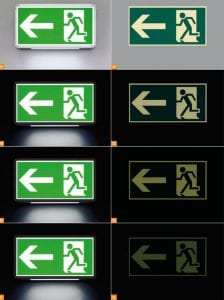I forgot to mention in the previous post the possibility to include in the student handbook and simplified overview of basic health and safety, what to do in the event of a fire, or even what differentiates safety signs from prohibitive, guidance, mandatory and advisory etc.
I explained to my supervisor that students can acquire a student handbook which gives advice on managing money, staying safe and things to do as a student, yet there was limited information on health and safety. My supervisor stated he has not read so is not fully aware of its contents in this student handbook readily available to students. I told him I had two and so will give him my spare copy.
I strongly feel this method of information giving could be a valuable platform to feature the basic health and safety guidelines of importance to the students. From a brainstorming perspective, it could be as little as a floor plan that included the fire assemble points to a more detailed plan of what to do in the event of a fire. When talking to peers there is a confusion as to whether to take personal belongings or not. This could be highlighted in a page that, unless personal belongings are not upon your person, take them with you. There seems to be a lack of understanding that in a working environment personal effects are in a locker room and not on the person. In this instance leaving the building without retrieving personal possessions is a must. However, within a teaching environment i.e a classroom or lecture hall where personal possessions are on the student, it is advisable for the student to take with them their possessions. Thus reducing security risks, or in the event of fire evacuation slip, trip and fall risks to other peers.
Note to self take spare student handbook to next meeting.

